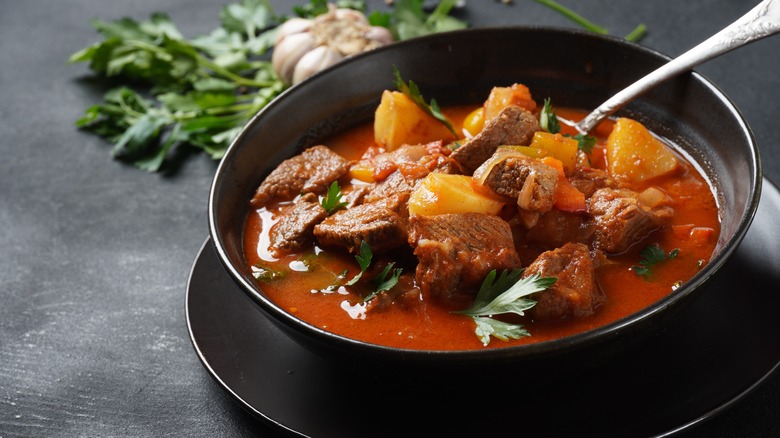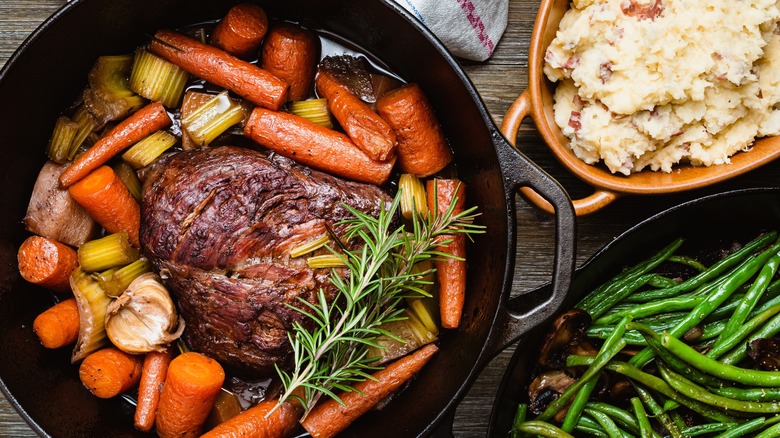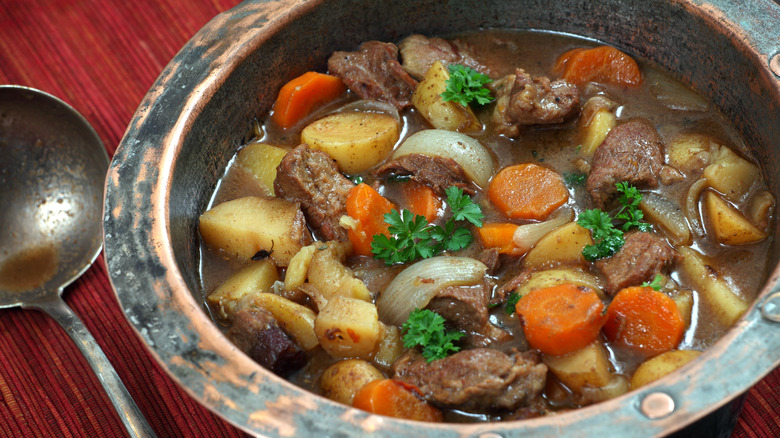The Difference Between Stewing And Braising
If you have a lot of lead time before dinner and you're looking for a hearty dish that doesn't require your full attention, you probably want to consider braising or stewing as a cooking option. As explained by The Culinary Pro, these two methods are similar, but there are a few key differences for those who are new to the process.
Both braising and stewing involve pan-searing your protein before allowing it to slow cook in simmering liquids alongside various seasonings and vegetables, both can be done on the stove and oven or in a slow cooker, and, as Weight Watchers notes, both are great ways to make use of cheaper, tougher cuts of meat.
The Irish Times also notes that both of these cooking methods are convenient for people who may be busy or who have limited kitchen space, as they can pretty much be prepared low and slow in a single pot.
However, just because these two cooking methods share certain commonalities does not mean they are the same. There are definite distinctions between these methods and choosing one over the other can depend on what ingredients you're using or how much time you have at your disposal.
What is braising?
The noteworthy feature of a braise that sets it apart from a stew is how the meat is cut, according to The Culinary Pro. A braise is generally made with large, whole cuts of meat that are seared in a pan, then placed in a pot and covered about ⅓ to ½ of the way up with liquid to finish cooking. You may have braised something before without knowing it if you've ever made pot roast, brisket, or carnitas.
Additionally, The Culinary Pro notes that braised meals are more commonly strained and served separately from the sauce they are cooked in, unlike stews that are served as is. Some of the best meats for braising include pork shoulder, chuck roast, lamb shoulder, and cuts of dark meat chicken like whole legs or thighs because they are high-fat cuts that tenderize beautifully when cooked low and slow (per Bon Appétit).
All about stewing
While The Culinary Pro notes that braising requires whole meat in lower amounts of liquid, the opposite is true of stewing. Stewing commonly uses smaller chunks of meat that need to be entirely submerged in liquid in order to keep it from drying out during the long cooking process.
As Pillsbury explains, this liquid is most likely water or stock, which can be combined with beer or wine for flavor. The liquid thickens during cooking and the dish is served straight from the pot like a thick, chunky soup that begs for bread or a biscuit to sop up all the delicious broth.
Common examples of stews include Irish Stew, which is usually made with mutton or beef, or the French coq a vin, which is another dish made with tougher cuts of chicken. Another benefit of stewing noted by Weight Watchers is that stews tend to freeze and reheat well, so making a large portion can provide simple meal prep for several days.


